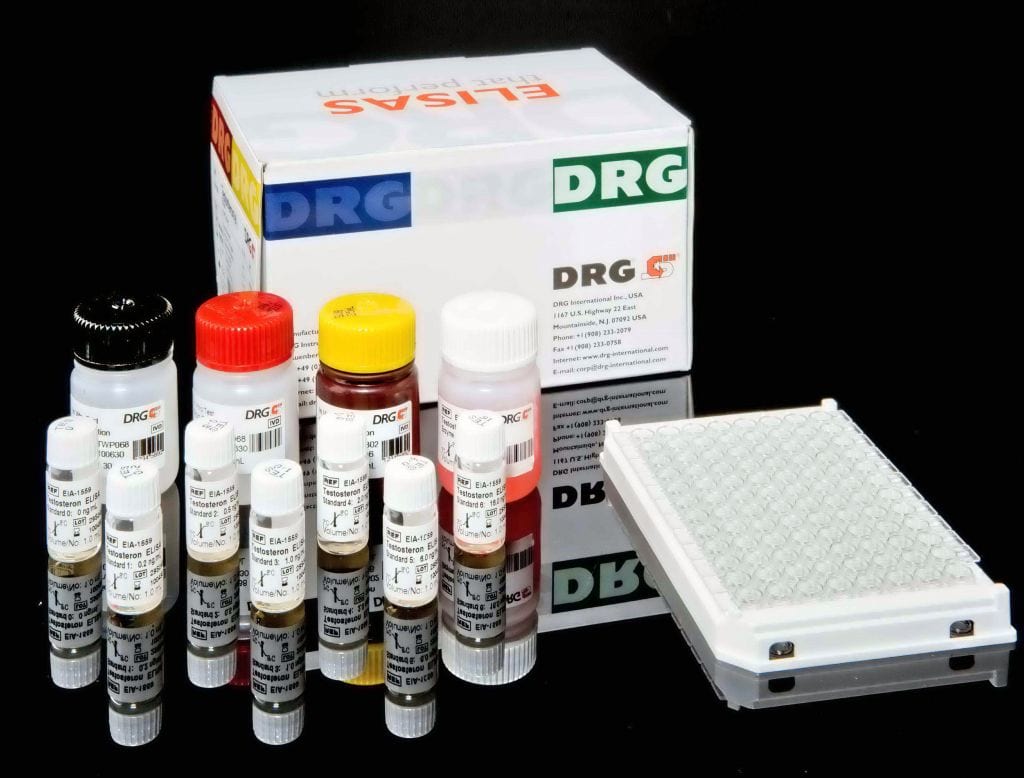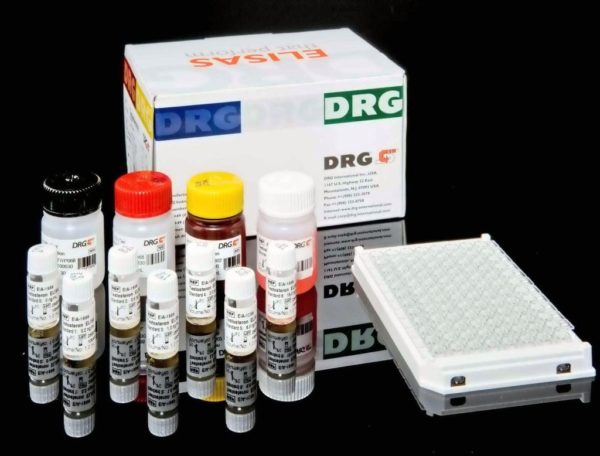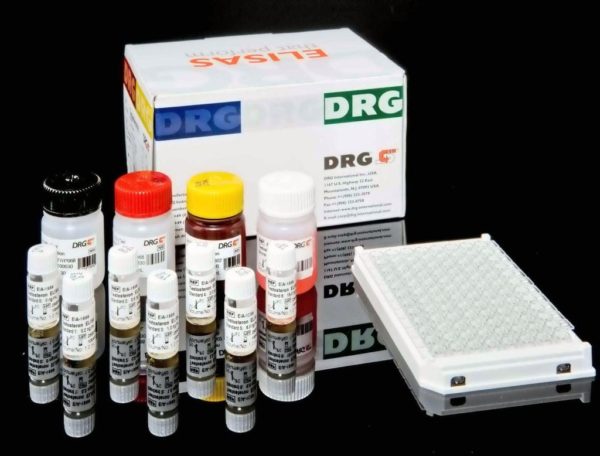Description
An enzyme immunoassay for the quantitative measurement of c-peptide in serum, plasma, and urine.
Insulin is synthesized in the pancreatic beta cells as a 6000 MW component of an 86 amino acid polypeptide called proinsulin. Proinsulin is subsequently cleaved enzymatically, releasing insulin into the circulation along with a residual 3000 MW fragment called connection (“C”) peptide, so-named because it connects A and B chains of insulin within the proinsulin molecule. Human C-Peptide, a 31 amino acid residue peptide, has a molecular mass of approximately 3000 daltons. C-Peptide has no metabolic function. However, since C-Peptide and insulin are secreted in equimolar amounts, the immunoassay of C_Peptide permits the quantitation of insulin secretion. This is the reason for the clinical interest of serum and urinary determinations of C-Peptide. Moreover, C-Peptide measurement has several advantages over immunoassays of insulin. The half-life of C-Peptide in the circulation is between two and five times longer than that of insulin. Therefore, C-Peptide levels are a more stable indicator of insulin secretion than the more rapidly changing levels of insulin. A very clear practical advantage of C-Peptide measurement arising from its relative metabolic inertness as compared to insulin is that C-Peptide levels in peripheral venous blood are about 5-6 times greater than insulin levels. Also, relative to an insulin assay, the C-Peptide assay’s advantage is its ability to distinguish endogenous from injected insulin. Thus, low C-Peptide levels are to be expected when insulin is diminished (as in insulin-dependent diabetes) or suppressed (as a normal response to exogenous insulin), whereas elevated C-Peptide levels may result from the increased _-cell activity observed in insulinomas. C-Peptide has also been measured as an additional means for evaluating glucose tolerance and glibenclamide glucose tests. C-Peptide levels are in many ways a better measurement of endogenous insulin secretion than peripheral insulin levels. C-Peptide may be measured in either blood or urine. With improved sensitive C-Peptide immunoassays, it is now possible to measure C-Peptide values at extremely low levels. The clinical indications for C-Peptide measurement include diagnosis of insulinoma and differentation from factitious hypoglycemia, follow-up of pancreatectomy, and evaluation of viability of islet cell transplants. Recently, these indications have been dramatically expanded to permit evaluation of insulin dependence in maturity onset diabetes mellitus.
The DRG C-Peptide ELISA Kit is a solid phase enzyme-linked immunosorbent assay (ELISA), based on the principle of competitive binding. The microtiter wells are coated with anti-mouse antibody, which binds a monoclonal antibody directed towards a unique antigenic site on the C-Peptide molecule. Endogenous C-Peptide of a sample competes with a C-Peptide-horseradish peroxidase conjugate for binding to the coated antibody. After incubation the unbound conjugate is washed off. The amount of bound peroxidase conjugate is inversely proportional to the concentration of C-Peptide in the sample. After addition of the substrate solution, the intensity of color developed is inversely proportional to the concentration of C-Peptide in the sample.




